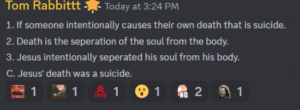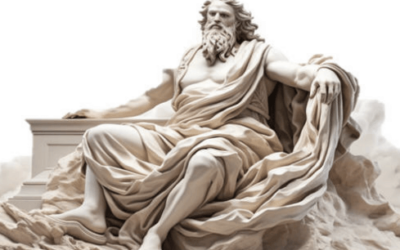Question: Evolutionists seem to point to the record of the horse as strong proof that evolution is true. Is their record of the horse’s evolution explainable through creation science?
Response: The supposed horse evolution is very aptly delineated by Kathleen Hunt at Talk Origins: http://www.talkorigins.org/faqs/horses.html.
There is also an interesting montage of the supposed changes in the horse’s leg by Gould here: http://www.microcolor-inc.com/html_files/photo_illos_credits/horse.html
But what is remarkable about the fifty or so sites I searched on the net was that not one gives close-up skeletal renditions of these stages, except for Gould’s leg montage. This is interesting because there are some very big problems with this horse scenario as presented by evolution.
It was only twenty years ago when this statement was made:
“Darwin . . . was embarrassed by the fossil record . . . . we are now about 120-years after Darwin and the knowledge of the fossil record has been greatly expanded. We now have a quarter of a million fossil species but the situation hasn’t changed much. The record of evolution is still surprisingly jerky and, ironically, . . . some of the classic cases of Darwinian change in the fossil record, such as the evolution of the horse in North America, have had to be discarded or modified as a result of more detailed information.”
David M. Raup, Curator of Geology, Field Museum of Natural History, Chicago; “Conflicts between Darwin and paleontology” Field Museum of Natural History, vol.50, no. 1, Jan 1979, p.25
As a correspondent also wrote in an email:
G. A. Kerkut is also an evolutionist who recognizes that the theory has some faults. His main problem with the horse series is that the original fossils are not available — everything on display is a reproduction, and there’s no way of knowing which bones were really found and which were added from imagination. He wrote: G.A. Kerkut, “The Implications of Evolution,” (New York: Pergamon Press, 1960), pp. 141-149:
“At present, however, it is a matter of faith that the textbook pictures are true or even that they are the best representations of the truth that are available to us at the present time. . . . It makes quite a difference whether a name on a diagram represents a whole skeleton or just a tooth, . . . “
Kerkut refers to the common practice of ‘reconstructions’ in textbooks and museum displays, where a full image of a presumed ancient creature is based on just a few actual fossil bones.
Nevertheless:
Approved North Carolina biology textbooks [and many others] hold up the so-called “horse series” as proof of evolution. Dr. Niles Eldredge, a curator at the American Museum in New York, has said: “. . . the most famous example . . . still on exhibit downstairs is the exhibit on horse evolution. . . That has been presented as literal truth in textbook after textbook. . . [T]he people who propose these kinds of stories themselves may be aware of the speculative nature of some of the stuff. But by the time it filters down to the textbooks, we’ve got science as truth and we’ve got a problem.” [http://www.cs.unc.edu/~plaisted/ce/challenge9.html ]
So how does creation science respond? The only way we can — with facts. The magazine “Creation ex Nihilo”, Vol 14, no.1, (Dec. 1991-Feb 1992) has a short article on page 50 making the following points and more:
1. The horse series was constructed from fossils found in many different parts of the world and nowhere does this succession occur in one location. The series is formulated on the assumption of evolutionary progression, and then used to ‘prove’ evolution!
2. The number of ribs varies within the series, up and down, between 15, 19 and 18. The number of lumbar vertebrae also changes from six to eight and then back to six.
3. Fossils of the three-toed and one-toed species are preserved in the same rock formation in Nebraska, proving that both lived at the same time, strongly suggesting that one did not evolve into the other (National Geographic, January 1981, p. 74)
[all emphases in the original]
If you go to this site: http://www.parentcompany.com/creation_explanation/cx3b.htm and check point #10, you will read the following:
10. Perhaps the best known demonstration of an evolutionary scenario is that of the horse series displayed in schools, college textbooks and in museums. These charts and displays make the theory of horse evolution very neat, seemingly historical, all cut-and-dried. Actually there are important problems with the theory and some serious disagreement, even among evolutionary scientists. [Simpson, G.G., Tempo and Mode in Evolution (Columbia Univ. Press, New York, 1944), p. 167; Cousins, Frank W., Creation Research Soc. Quarterly, Vol. 8, Sept. 1971, pp. 99-108; Nilsson, Heribert, Synthetische Artbuildung, (Verlag C.W.K. Gleerup, Lund, Sweden, 1953: reprint of English summary published by Evolution Protest Movement of North America, Victoria, B.S., 1953), pp. 1193-1194; Kerkut, G.A., Implications of Evolution (Pergamon Press, New York, 1960), pp. 144-149; Wentworth Baroness, Thoroughbred Racing Stock (Charles Scribners, Sons, New York, 1938), p. 379.]
- A complete series of horse fossils is not found in any one place in the world arranged in the rock strata in proper evolutionary order from bottom to top. The fossils are found in widely separated places on the earth.
- The currently accepted sequence of fossils starts in North America, then jumps to Europe and back to America again. But there are still differing opinions on whether one of the jumps was from America to Europe or vice versa. Many different evolutionary histories for horses have been proposed.
- Hyrocotherium (eohippus), supposedly the earliest, founding member of the horse evolution series, is not connected by intermediate fossils to the condylarths from which it supposedly evolved. [Simpson, G.G., Horses (Oxford Univ. Press, New York, 1951), pp. 105-112, 115-116.]
- The first three supposed horse genera, found in rocks classified as Eocene, are named Hyracotherium, Orohippus, and Epihippus, and they are said to have evolved in that order. However, the average size of these creatures, sometimes called “old horses,” decreases along the series, which is contradictory to the normal evolutionary rule, and they were all not larger than a fox. [Ibid., pp. 116-117; Simpson, G.G., ref. 3, p. 135]
In view of their similarity, these genera could be considered to be members of an originally created biblical “kind.”- Between Epihippus and Mesohippus, the next genus in the horse series, there is a considerable gap. [Simpson, G.G., ref. 30, p. 124. Other fossil horse data cited below can be found in the same work] The size increases about 50 percent and the number of toes on the front feet decreases from four to three. The series of genera, Mesohippus, Miohippus, and Parahippus, sometimes called the (small) “new horses,” were three-toed animals much more similar in appearance to modern horses than the previous group discussed. These, perhaps, were members of another created kind.
- Merychippus, the next genus in the supposed horse evolution series, and the first of the (large) “new horses,” was about 50 percent larger than the group of genera just discussed. It was three-toed, but the two side toes on each foot were quite small and unimportant, and the animals looked very horselike. Pliohippus, the next genus in the series, was a one-toed horse. These animals had some characteristics of skeleton and teeth which differed from modern horses, but they may, perhaps, be classified with them as members of the same original created kind.
- According to the theory, in Europe and North America three-toed horses evolved into single-toed horses. It is interesting that fossil horse-like ungulates of South America would seem to tell the opposite story. If one kind of ungulate evolved into another in South America, it would appear from the location of the fossils in the rock strata that the following succession of evolutionary stages occurred: first, the one-toed Thoatherium gave rise to Diadiaphorus having two small extra toes, which then evolved into the three-toed Macrauchenia. [Gish, Duane, Evolution: The Challenge of the Fossil Record (Master Books Pub., San Diego, 1985) pp. 83-84; Romer, Alfred S., Vertebrate Paleontology, 3rd Edition (Univ. of Chicago Press, 1966), pp. 260-261]. But perhaps all of these animals were created, rather than evolved.
- In northeastern Oregon the three-toed Neohipparion is found in the same rock formation with the one-toed horse, Pliohippus. [Nevins, Stuart E., Creation Research Soc. Quarterly, Vol. 10, March 1974, p. 196.]
- There is a mystery about the theory of horse evolution. It arises from the fact that the brain of little Hyracotherium was simple and smooth, as indicated by the smooth inner surface of the fossil skulls. The brain of true horse, Equus, has on its outer surface a complex pattern of folds and fissures. [Simpson, G.G., ref. 30, pp. 177-179; Davidheiser, Bolton, Creation Research Soc. Quarterly, Vol. 12, Sept. 1975, pp. 88-89]. Cattle brains are quite similar and equally complex and have an almost identical pattern of fissures. Cattle and Hyracotherium supposedly evolved from a common ancestor which had a simpler pattern of fissures. Therefore, it must be assumed that parallel evolution by chance processes produced the same complex brain pattern possessed by both modern cattle and horses. Such a tale is difficult to swallow.
Intelligent, purposeful creation provides a more believable explanation.- Dr. Niles Eldridge of the American Museum of Natural History admitted in an interview that the Museum houses a display of alleged horse evolution which is misleading and should be replaced. It has been the model for many similar displays across the country for much of this century.[ Bethel, Tom, “The Taxonomic Case Against Darwin,” Harper Magazine, Feb. 1985, pp. 49-61. Niles Eldredge is quoted on page 60.]
To summarize, the alleged horse evolution series actually appears to be three groups of genera. The first in the series has no connection by fossil intermediates to the supposed ancestors. The three groups may well have no connection one with the other, and the overall fossil horse data can be fitted into the framework of the biblical creation model. The three groups of genera may represent three created kinds which should be fitted into the classification system as three separate “families” of ungulates. There is no need to assume that horses were evolved rather than created. The faith of atheistic materialism leads one to evolved horses. The faith of biblical theism leads to created horses.
Or you might want to try the short series of thoughts here: http://christiananswers.net/q-aig/aig-c016.html entitled “What Happened to the Horse?”






